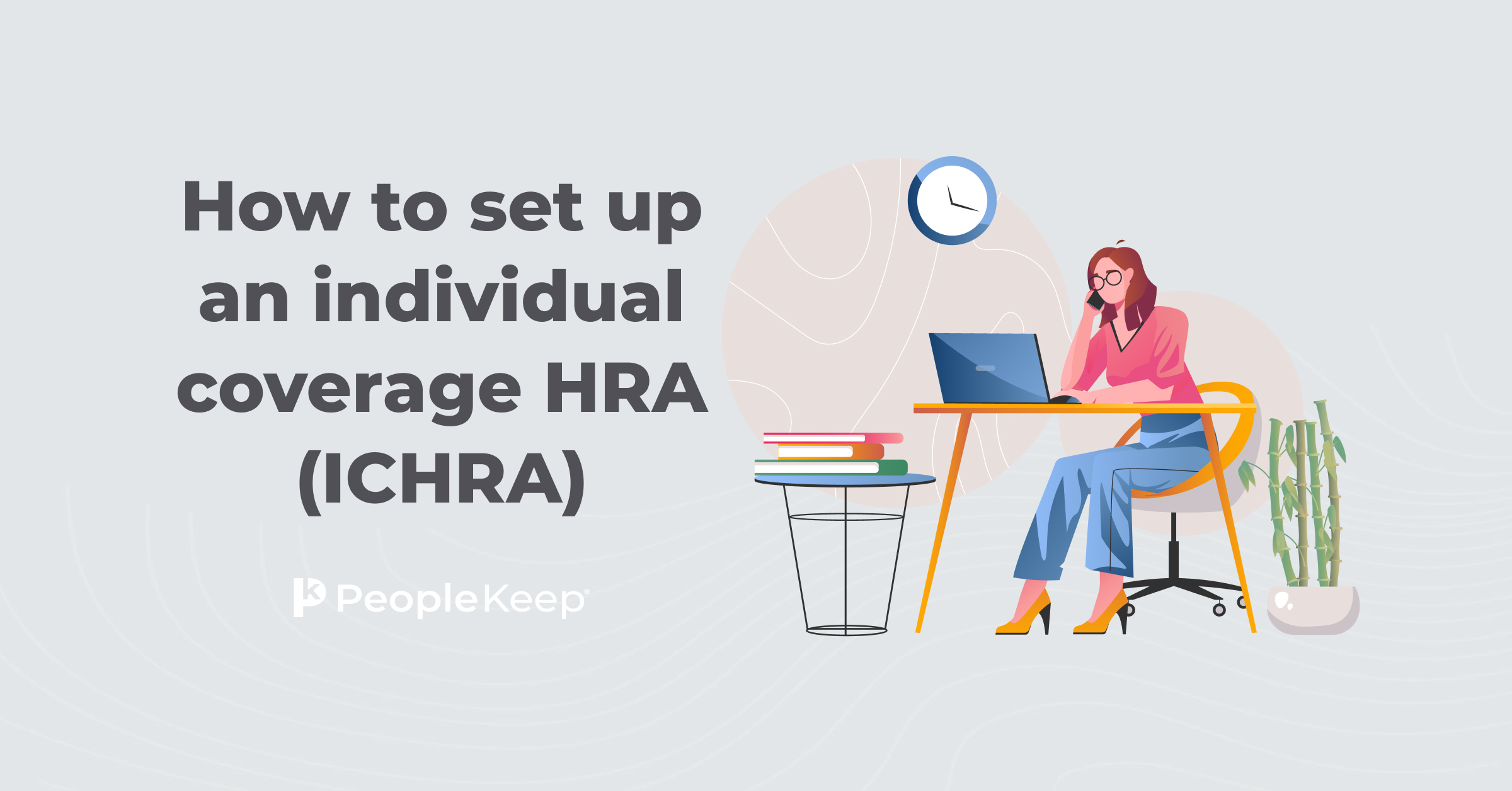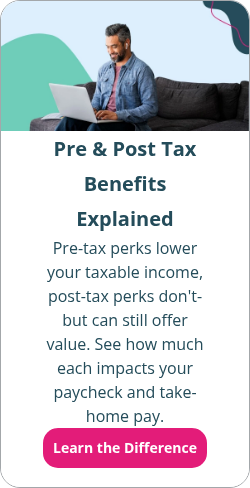The top five types of employee benefits
By Holly Bengfort on August 7, 2025 at 8:00 AM
Employee benefits are important for enhancing job satisfaction and engagement within an organization. From health insurance to retirement plans, employers can offer several common types of benefits to their employees. However, not all employee perks are created equal.
Based on results from PeopleKeep's 2024 Employee Benefits Survey, we've compiled a list of the top five types of benefits that are most important to employees.
In this article, we'll cover which employee benefit offerings give the best return on investment. By offering these perks, employers can create more attractive and competitive employee benefits packages that help them stand out in the labor market.
In this blog post, you'll learn:
- Which benefit supports a healthy work-life balance for your workers.
- How the right benefits can increase employee satisfaction at your organization.
- Why you should include additional perks as part of your overall compensation package.
1. Health benefits
If you want happy employees, offer them health insurance benefits. According to our survey, healthcare coverage is the most sought-after employee benefit. Survey results show that 92% of employees rated health benefits as important. It's also one of the most common employee benefits, with 74% of employers offering them.
"I feel like it's important to show value to your workers," said an anonymous employee survey respondent. "Helping to make sure they stay healthy shows you value them."
A quality health benefit can also entice more talented employees to join your team.
So, what types of health benefits can employers offer? Let's go over your options.
Traditional group health insurance
This type of insurance is a popular choice for many employers due to its familiarity. Employers buy group health insurance policies for employees, their spouses, and their dependents. Employees can then choose to opt in or opt out of coverage.
Some of the most common types of health insurance include:
- Health maintenance organization (HMO)
- Preferred provider organization (PPO)
- Point of service (POS)
- Exclusive provider organization (EPO)
Employers looking at group policies may face steep minimum participation rates or high premiums they can't afford. According to KFF1, the average annual cost of employer-sponsored health insurance premiums per employee was $25,572 for family coverage and $8,951 for single coverage in 2024.
Self-funded group plans
Employers can also establish a self-funded plan. With this type of group plan, the employer covers workers’ medical claims directly. But, this can come with a hefty administrative burden. Small employers also may not have enough capital to cover large or excessive medical claims. Using a third-party administrator or enrolling in a stop-loss policy can help. But, there’s a better option for employers that doesn’t involve taking on the risk of medical claims.
Health reimbursement arrangement (HRA)
A health reimbursement arrangement (HRA) is a cost-effective alternative to traditional group health insurance. It's an employer-funded health benefit that allows employers to reimburse employees for more than 200 qualifying healthcare costs, including individual healthcare premiums. This eliminates the need to buy a one-size-fits-all group plan.
Here are some examples of HRA-eligible expenses:
- Prescription drugs
- Over-the-counter medicine
- Doctor visits
- Dental care
- Vision care
- Mental health counseling
Here’s how it works: Employers set their own allowance amount. Then, employees pay for their medical care using their own money. Once they incur an expense, they can submit it for reimbursement. When you or an HRA administrator approve the expense, you can reimburse them up to their allowance amount. Employer contributions are tax-free, and reimbursements are tax-free for employees.
Two of the most popular stand-alone HRAs are:
- The individual coverage HRA (ICHRA): The ICHRA is for businesses of all sizes, including large organizations. With no contribution limits, employers can offer as much or as little of an allowance as they would like. They can also differ allowances and benefit eligibility with 11 employee classes, such as full-time or part-time workers. Plus, an ICHRA satisfies the Affordable Care Act's (ACA) employer mandate without the need for a group health insurance plan. Organizations just need to offer an affordable allowance to their staff. Employees must have a qualifying individual health insurance plan to participate.
- The qualified small employer HRA (QSEHRA): The QSEHRA is for small businesses with fewer than 50 full-time equivalent employees (FTEs). You must offer a QSEHRA to all W-2 full-time employees, but you can choose whether or not to offer it to part-time employees as well. There are annual contribution limits with a QSEHRA. Employees must have a health plan with minimum essential coverage (MEC) to participate.
2. Dental insurance
While many people worry about the rising cost of healthcare, dental care is close behind. Dental coverage ranked as the second most important employee benefit in PeopleKeep’s 2024 Employee Benefits Survey. Results show that 91% of employees rated dental benefits as important, yet only 53% of employers offer them. Offering primary and supplemental dental benefits to workers can make your organization more competitive in the labor market. Affordable dental care also makes it easier for your team to maintain good oral health, which helps prevent costly issues down the line.
If you choose to offer an HRA to your employees, you can reimburse them for their dental care needs. With a QSEHRA or an ICHRA, you can also reimburse them for their dental insurance premiums. However, this isn't an option with a group coverage HRA (GCHRA).
3. Paid time off
Paid time off (PTO) is the third most popular benefit in our survey. Employees appreciate having time off to rest and recharge. Survey results show that 90% of employees rated PTO as important. Offering paid vacation days, sick time, and holidays can help workers achieve a healthy work-life balance and reduce burnout. This improves the employee experience.
"I value PTO the most because spending time with family is what really matters in life," said an anonymous survey respondent.
Taking time away from the office is essential for employees to return to work with renewed energy. Providing unlimited PTO, or at least a generous amount of it, is a surefire way to boost employee morale and employee engagement at your organization.
4. Retirement benefits
Employees also want financial security for the future, especially since 57% of American workers feel like they're behind in their retirement savings, according to a Bankrate survey2.
PeopleKeep survey results show that 89% of employees believe that retirement benefits are important. Retirement savings plans, such as 401(k) plans or pension plans, provide employees with a safety net and a retirement solution that allows them to enjoy their lives after ending their careers. Most importantly, retirement benefits allow your employees to live sustained and comfortable lives.
Though programs such as Social Security exist as a part of an employee's retirement, most employees greatly value additional retirement programs that help them begin to save for their time after retiring from a job. Many employees often forget to begin saving for retirement, but when their employer offers retirement plans and savings options, it pushes them to begin this important step.
Providing your employees with a retirement plan for financial stability in the future can enhance job loyalty and boost employee retention.
5. Vision insurance
Vision insurance ranks as the fifth most attractive benefit, with 81% of employees ranking it as important. This type of employee benefit covers things like annual eye tests, eyeglass lenses, frames, and contact lenses. This is another employee perk that can give you a competitive edge since only 48% of employers we surveyed currently offer vision insurance benefits.
With an HRA, you can reimburse your employees for their vision care expenses, including expenses that vision insurance doesn't typically cover, like LASIK eye surgery. If you offer a QSHERA or an ICHRA, you can also reimburse them for their vision insurance premiums.
Additional employee-oriented benefits to consider
Survey results show that mental health benefits, wellness benefits, and life insurance are in the middle of the pack in terms of importance to employees. While they don't rank as high as other employee benefits in level of importance, they're still desired by many current and potential workers.
Other voluntary benefits that contribute to employee well-being include:
- Education benefits, such as tuition reimbursement or student loan assistance
- Professional development perks like training programs or online courses
- Commuter benefits
- Fertility benefits
- Childcare benefits
- Employee stock options
- Profit sharing
Additionally, employers should consider offering flexible work schedules if they want to entice job seekers. Survey results show that 57% of employees said having access to remote work or a hybrid work environment is important.
Why should you offer employee benefits?
These days, employees want compensation beyond their regular salary. Survey results found that 81% of employees said an employer's benefits package is an important factor in whether they accept a job. So, if your job offer doesn't come with additional perks, talented employees may look for better opportunities elsewhere.
PeopleKeep by Remodel Health can help you customize a benefits strategy that aligns with the specific needs of your organization. Our HRA administration software makes it easy to set up and manage your HRA in just minutes each month. Our experts generate your legal plan documents, verify employee expenses per IRS guidelines, and automatically send required notices so you don't have to. This gives you back valuable time to invest in other areas of your business.
Conclusion
By offering these types of employee perks, employers can create comprehensive employee benefits packages that stand out from the competition. When employers invest in the benefits employees want most, they can attract and retain top talent, increase employee satisfaction, and create a productive work environment.
This blog article was originally published on February 14, 2020. It was last updated on August 7, 2025.
Check out more resources
See these related articles

What is a burden rate?
The burden rate is the total indirect costs associated with employing a worker, such as benefits, taxes, and overhead. Learn more about burden rates here!

What to do when your group health insurance premiums go up
Dealing with a health insurance premium increase? This guide has you covered with tips and strategies to navigate changes and keep your coverage affordable.

How to set up an individual coverage HRA (ICHRA)
Ready to offer ICHRA? Follow this guide to learn how to set up an Individual Coverage HRA, from plan design to compliance and employee communication.



